Water Saving
20 Things You’ve Been Dying to Know About the Eco Flush Toilet
There is an old well-used proverb that says ”Necessity is the mother of all invention”. The phrase can be applied to all of the advancements of mankind from the Bronze Age right through to today, and applies to all aspects of modern life, not least to innovation surrounding water saving technology.
The Eco Flush toilet was invented in Sweden to provide water-saving flushable toilets to homes on some of the 250 000 islands that make up the country. Like most islands in the world, Swedish islands have few or no permanent streams or lakes which means groundwater is hard to come by and needs to be used sparingly and efficiently.
This loo looks and works like a conventional toilet, but saves over 90% of water compared to conventional toilets. With Eco Flush, there is no need to let yellow mellow. No need to carry heavy buckets of water to flush, no need to place bottles in the cistern to control flow. You can use the toilet as usual with peace of mind that you’re saving water, doing your bit for the environment and maintaining your lifestyle.
Water scarcity, the hottest and driest summer on record, and hundreds of wild fires, has put water high up on the Swedish agenda this year and just like Cape Town, people have had to adapt to the new normal of water scarcity. We now share two things with the Scandinavian country : water scarcity and the Eco Flush toilet.
Scandinavian Water Saving Products is proud to now be importing the Eco Flush toilet into South Africa. Find here all you need to know about its design and how it works.
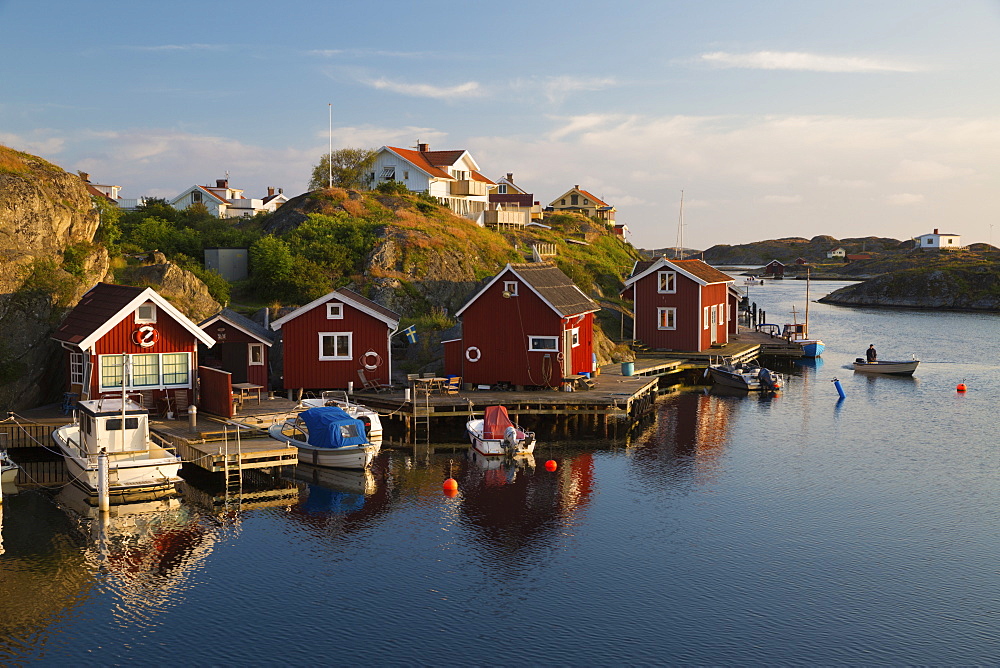
Water wise homes do more with less
Table of Contents:
- What is the Eco Flush toilet?
- Why was the Eco Flush toilet developed?
- How does the toilet work?
- How much water does the Eco Flush toilet use?
- What is the round chrome plate in the bowl? What is it for?
- Do I need special ”aiming” skills to use the toilet properly?
- Can I throw toilet paper in the toilet?
- How do I clean the toilet?
- Does this toilet smell more than others?
- Is it possible to flush solid waste?
- Can I still use the loo and save water if I have a runny tummy?
- What if waste ends up in the urine section of the bowl?
- How long has Eco Flush been on the market?
- I’m renovating my bathroom, can I just replace my existing toilet with an Eco Flush?
- What colours is the toilet available in?
- Can I change the toilet seat?
- I don’t like the look, is it available in another design?
- How does it compare to other low flush toilets?
- I have a rainwater tank. I don’t need this toilet, right? Wrong!
- What if I have several toilets in my house?
1. What is the Eco Flush toilet?
If you’re a woman, you’re probably familiar with the long queues to public bathrooms whilst the men just whizz in and out of theirs. This is because men’s public bathrooms have both toilets AND urinals. As unfair as it may seem, men have been able to choose to save water for decades by using the urinal for peeing or the ordinary loos for pooping. By using the urinal, they use only a fraction of the water used in the toilet.
Women have never had that choice. Up to now!
The Eco Flush toilet democratizes gender differences in saving water! It is a combined urinal and toilet in one so we all can play our part in saving water, whilst maintaining our lifestyles.
Eco Flush is an extreme water saving toilet made up of the following parts:
- cistern
- flush mechanism
- bowl
- seat
- chrome air trap for front bowel
- adapter for hose from front bowel
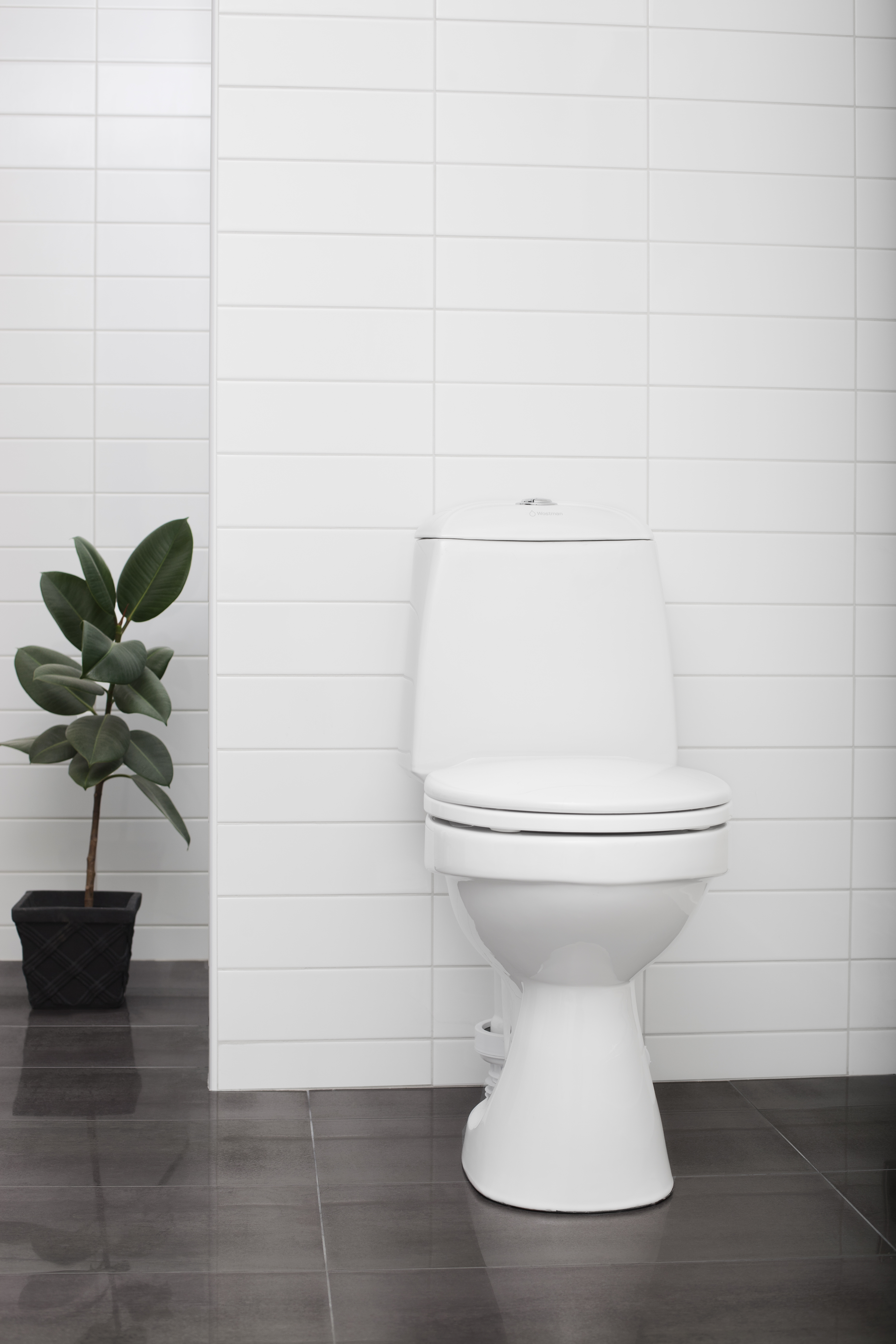
2. Why was the Eco Flush toilet developed?
The EcoFlush toilet was invented in Sweden where it is common to have homes in the archipelago and in remote areas where there is no municipal sewerage nor water infrastructure. In these areas, potable water is scarce and most home owners have their toilets connected to septic tanks which need to be emptied regularly. This is expensive.
The toilet was developed in order for home owners to be able to use the toilet more efficiently, with less water and also save expense and hassle when emptying the septic tank.
3. How does the toilet work?
The EcoFlush toilet’s unique design separates urine from faeces so you do not need to flush the entire bowl every time you use the loo. It works as a normal toilet and the flush buttons are situated on the cistern as usual.
The chrome plate in the front part of the bowl is a specially designed air trap (it is NOT the flush button!) to prevent smells welling up from the sewerage. This smell control function is usually performed by the water that is held in the bowl of a conventional toilet. The back part of the Eco Flush also holds water like a normal toilet.
There are two flush buttons on the cistern like in a conventional dual flush toilet except that with Eco Flush, the small flush will release 300 ml into the front part of the bowl, and the large flush will release 2,5 litres into the entire bowl. The volume of the big flush can be adjusted and set to use more water if necessary.
4. How much water does the Eco Flush toilet use?
The water usage of this toilet is calculated based on the assumption that a person will use the toilet on average 6 times per day: 5 times to wee and once to poop.
In the table below you can compare the water saving qualities of this loo.
| Litres used per day to flush 5 times after urinating | Litres used per day for flushing once after emptying bowels | Total litres of water used per day | |
| Conventional toilet (10 litres per flush) | 50 litres | 10 litres | 60 litres |
| Eco Flush (0,3 and 2,5 litres per flush) | 1,5 litres | 2,5 litres | 4 litres |
| Cape Town Water Restrictions 6B recommendation for flushing (1 flush per day) | 10 litres (1 flush allowed per day) | 10 litres | 10 litres |
A family of 4 that uses the loo 6 times a day each, will save 81782 litres of water per year compared to a conventional toilet. (4 x 4 x 365 vs 4 x 60 x 365).
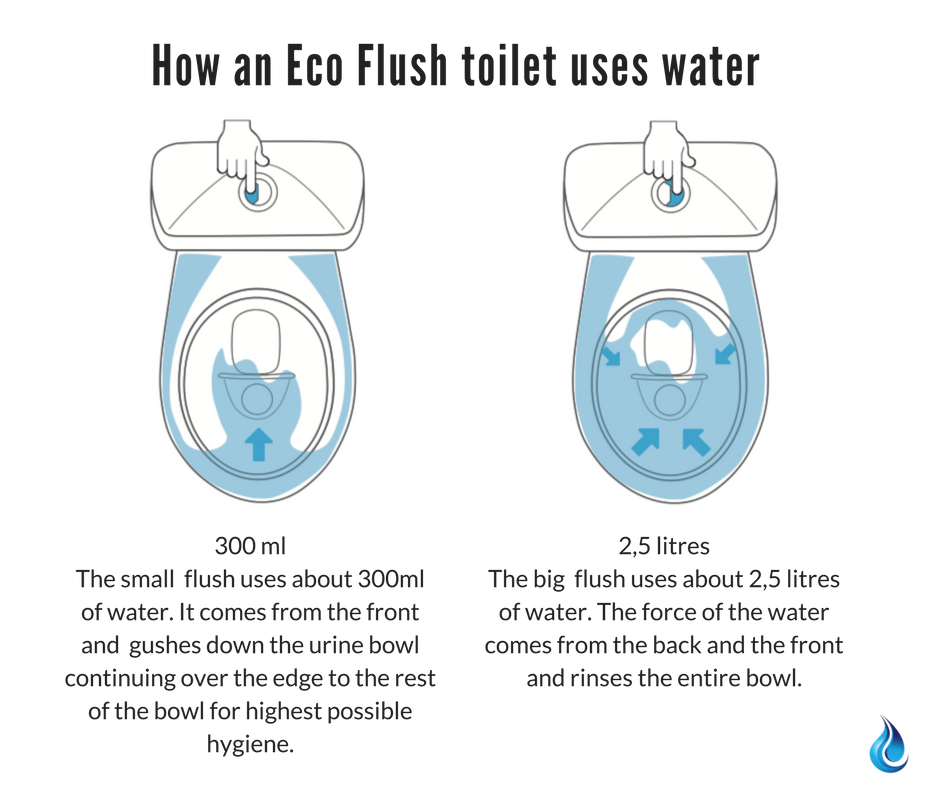
These figures are conservative especially if one assumes 6-8 flushes per day.
5. What is the round chrome plate in the bowl? What is it for? Do I need to touch it?
The chrome plate in the front part of the bowl is a specially designed air trap to prevent smells welling up from the sewerage (it is not the flush button!). This smell control function is usually performed by the water that is held in the bowl of a conventional toilet. The back part of the Eco Flush also holds water as a normal toilet.
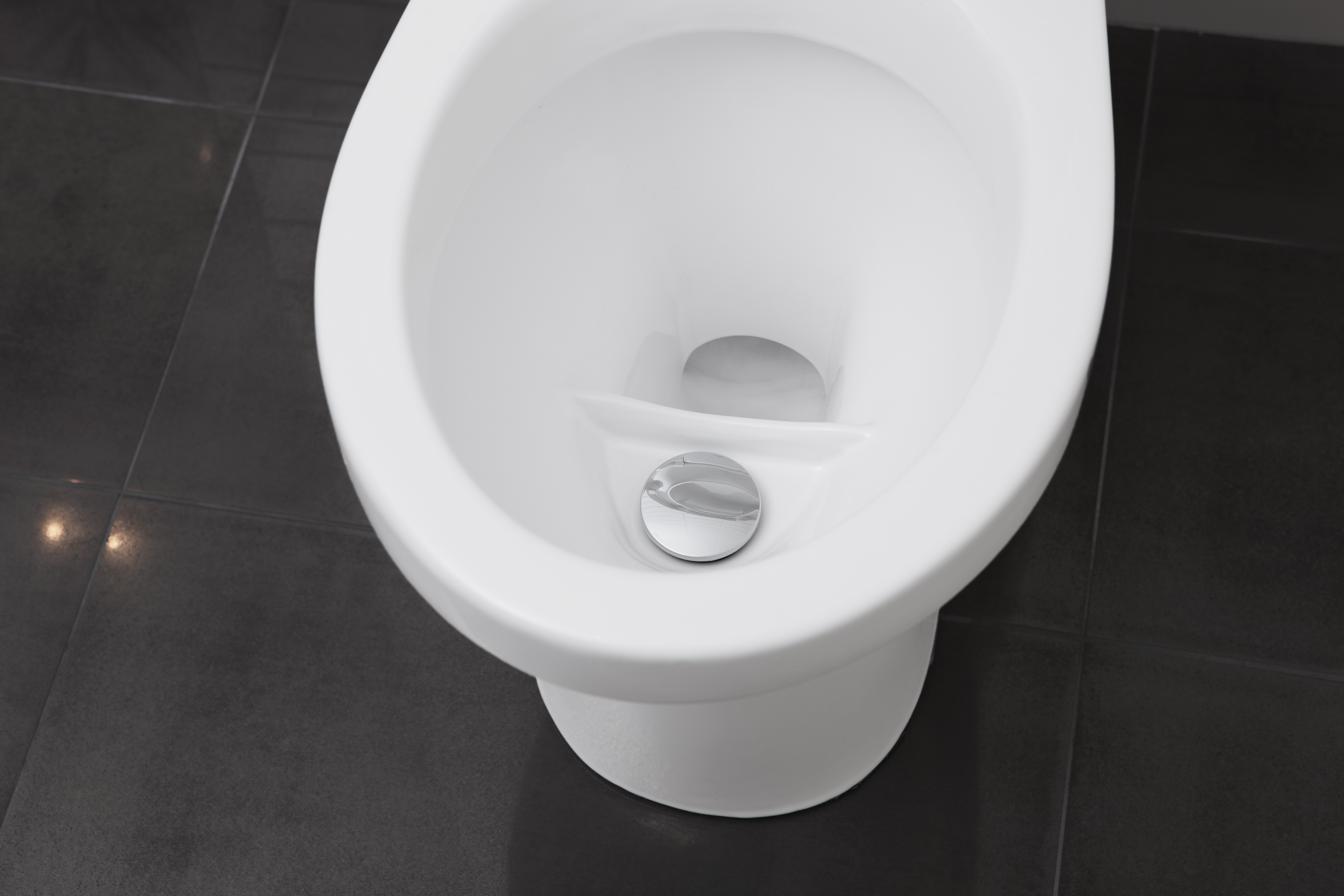
6. Do I need special ”aiming” skills to use the toilet properly?
No. Both women and men should use the toilet sitting down. The bowl design ensures that waste lands in the correct place. For men, this is a healthier way of emptying the bladder (ask your doctor for his/her opinion). As a bonus for the rest of the family, the toilet bowl and floor remain clean.
7. Can I throw toilet paper in the toilet?
The front bowl (small flush) is not designed to flush toilet paper. We recommend that you throw toilet paper used for peeing, in a separate bin. This may be unusual for South Africans, but the fact is that there are many countries in the world where throwing paper in the bowl is frowned upon, many of them in Europe. In fact, paper is not allowed to be flushed at all.
When using the large flush after number 2, toilet paper can be flushed down as usual.
We recommend the use of toilet paper with short fibers which disintegrate quickly. Most South African toilet paper has short fibres.
8. How do I clean the toilet?
The toilet bowl is cleaned as usual with a toilet brush or with cleaning products.
9. Does this toilet smell more than others?
No. Thanks to the air trap in the front bowl, the loo does not smell. The back bowl is like a conventional toilet.
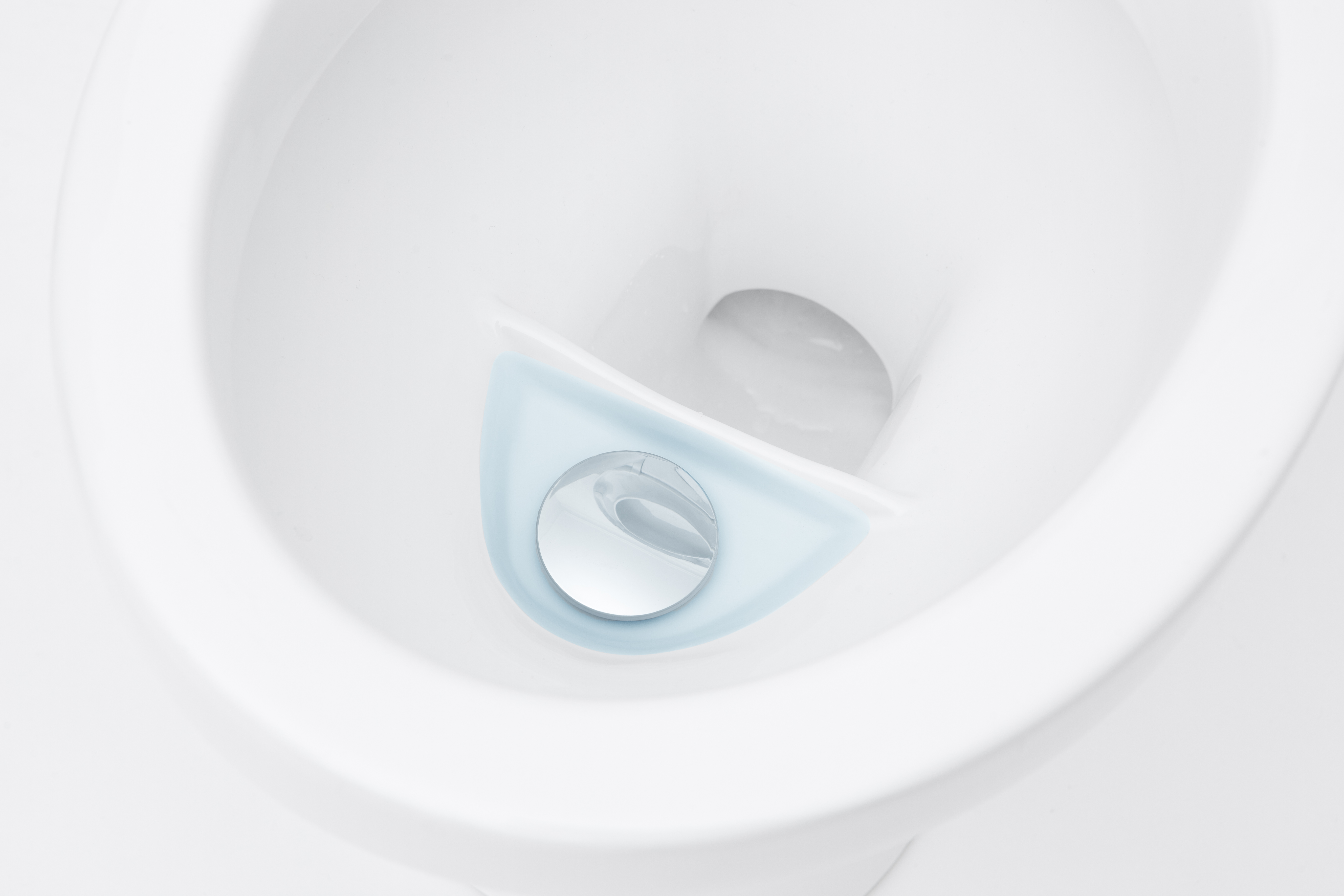
10. Is it possible to flush solid waste?
Yes, use the big flush.
11. Can I still use the loo and save water if I have a runny tummy?
Yes, you can, but you will have to use the big flush more often. Even the big flush uses significantly less water than the standard toilet (2.5 litres vs 10 litres).
Quick fact: Thanks to a popular children’s book, we understand from an early age that Everybody Poops. What many don’t understand, though, is that not everyone has a toilet to do it in. In fact, one in three people on this planet does not have access to a toilet, and the unsanitary conditions that surround this lack of a loo lead to all sorts of otherwise preventable illnesses.
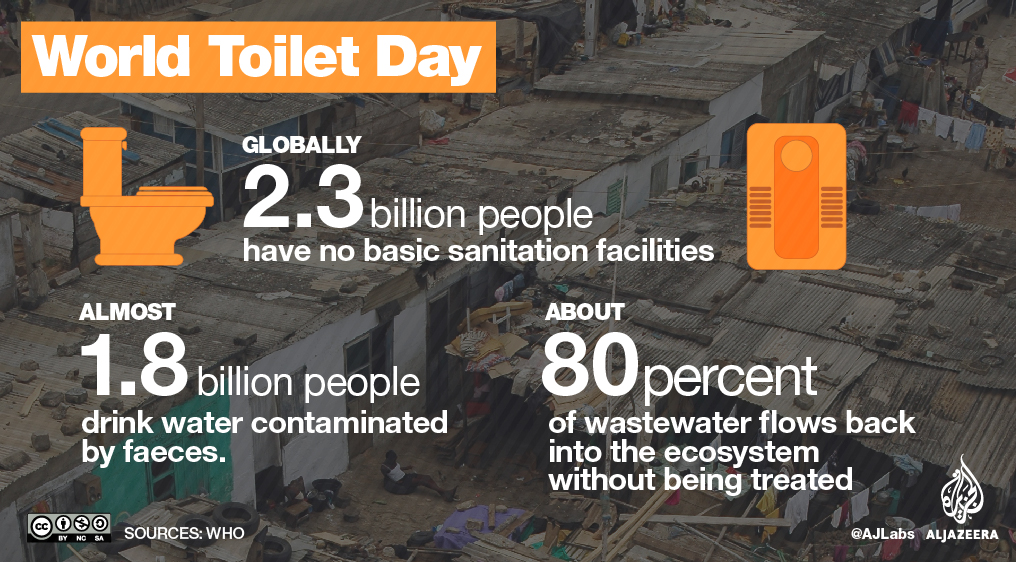
Established in 2001, World Toilet Day — November 19 — is meant to draw attention to the plight of millions of people around the world who lack proper sanitation and the problems that it leads to. The movement has seen some success: In 2010, the United Nations General Assembly recognized sanitation and water as an essential human right. It’s a great step toward healthier, happier lives for millions in some of the poorest nations of the world.
12. What if waste ends up in the urine section of the bowl?
Simply flush the big flush. If that is not enough, you’ll have to use a normal toilet brush.
13. How long has Eco Flush been on the market?
The toilet has been sold in Sweden for almost thirty years and is a well established product. In South Africa, it has only recently been introduced. The toilets are designed and assembled in Sweden and are used by thousands of people every day.
14. I’m renovating my bathroom, can I just replace my existing toilet with an Eco Flush?
Yes, if your bathroom’s sewerage pipes are coming from the floor.
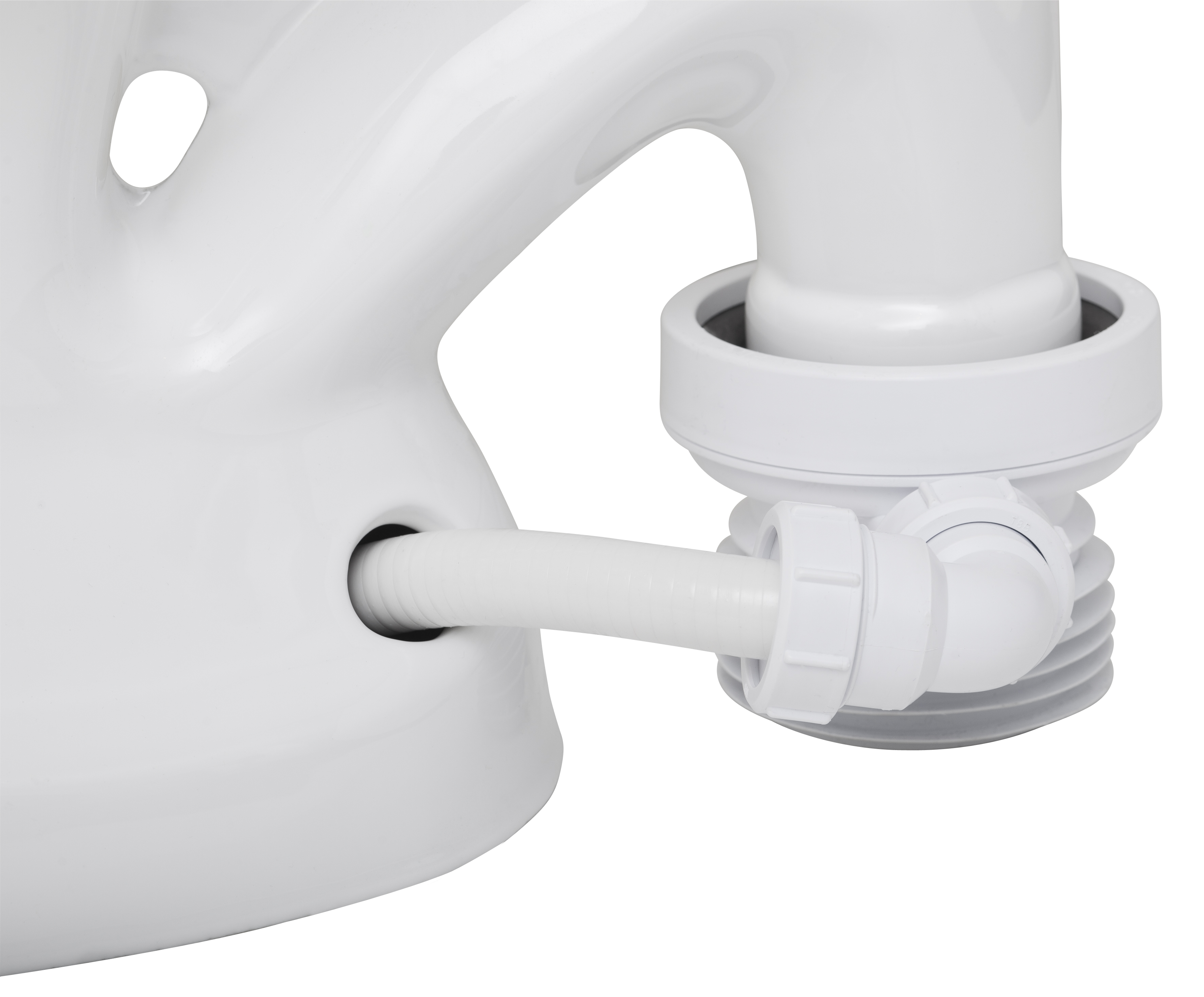
In toilets where sewage pipes come from the wall, you’ll need to consult your plumber to find a solution.
The toilet is designed to have the sewage pipes down into the floor in order to use as little water as possible and make use of the Syphon effect to empty the bowl.
15. What colours is the toilet available in?
White only.
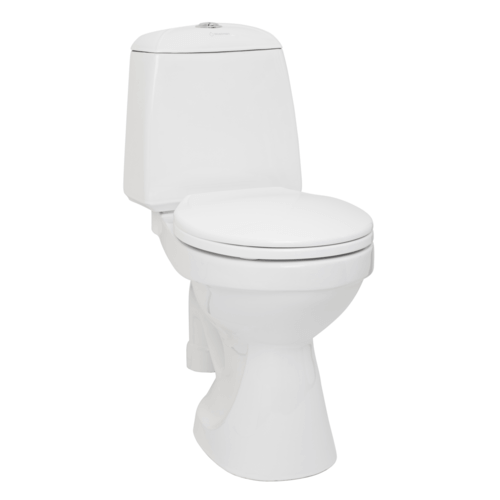
16. Can I change the toilet seat?
Eco Flush comes with a slow closing seat in white plastic. This is of standard size and can be replaced with a seat of your choice.
17. I don’t like the look of the toilet, is it available in another design?
No, the Eco Flush only comes in this design. Look at it as your working ”bakkie”, it does the hard work every day. Install it in the busiest bathroom of your home and save the fancy designer ware for the other bathrooms.
Use your toilet guilt-free and instead of flushing 9-12 litres of drinking water to flush 200ml of urine, use 300ml to flush with Eco Flush.
18. How does it compare to other low flush toilets?
Well it doesn’t. This toilet is the only one on the market that has a urinal and a normal toilet in one.
There are other water-saving toilets on the market however no other product uses as little water to flush as Eco Flush.
19. I have a rainwater tank. I don’t need this toilet, right? Wrong!
In the first place it has to rain in your area in order to fill the tank. With the increasingly unpredictable rains, there are no guarantees that your tanks will be filled when you need them.
Secondly, 2,5% of the water that exists on earth is fresh water and there is simply no situation that warrants wasting potable fresh water.
Lastly, if you do have a rainwater tank, you can use it more efficiently by connecting it to an Eco Flush toilet.
Here is an easy calculation:
| Toilet water consumption for family of 4 | How long will your 5000 litre tank last? | |
| Conventional toilet (10 litre flush) | 240 litres per day | 21 days |
| Eco Flush (0,3 and 2,5 litres) | 16 litres per day | 312,5 days |
20. What if I have several toilets in my house?
If you can’t change all your toilets, we recommend that you install an Eco Flush in the busiest toilet of the house. This is usually the guest bathroom.
Being water savvy and living in a sustainable way requires research, effort and investment. At times it can feel overwhelming to be a water warrior. However, the alternatives of waiting for rain or carrying buckets are not sustainable over time and don’t make sense when there are products and technology available that effectively address our water scarcity problems. Even if Day Zero has been avoided in 2018, we can do our bit to avoid it ever coming close again.
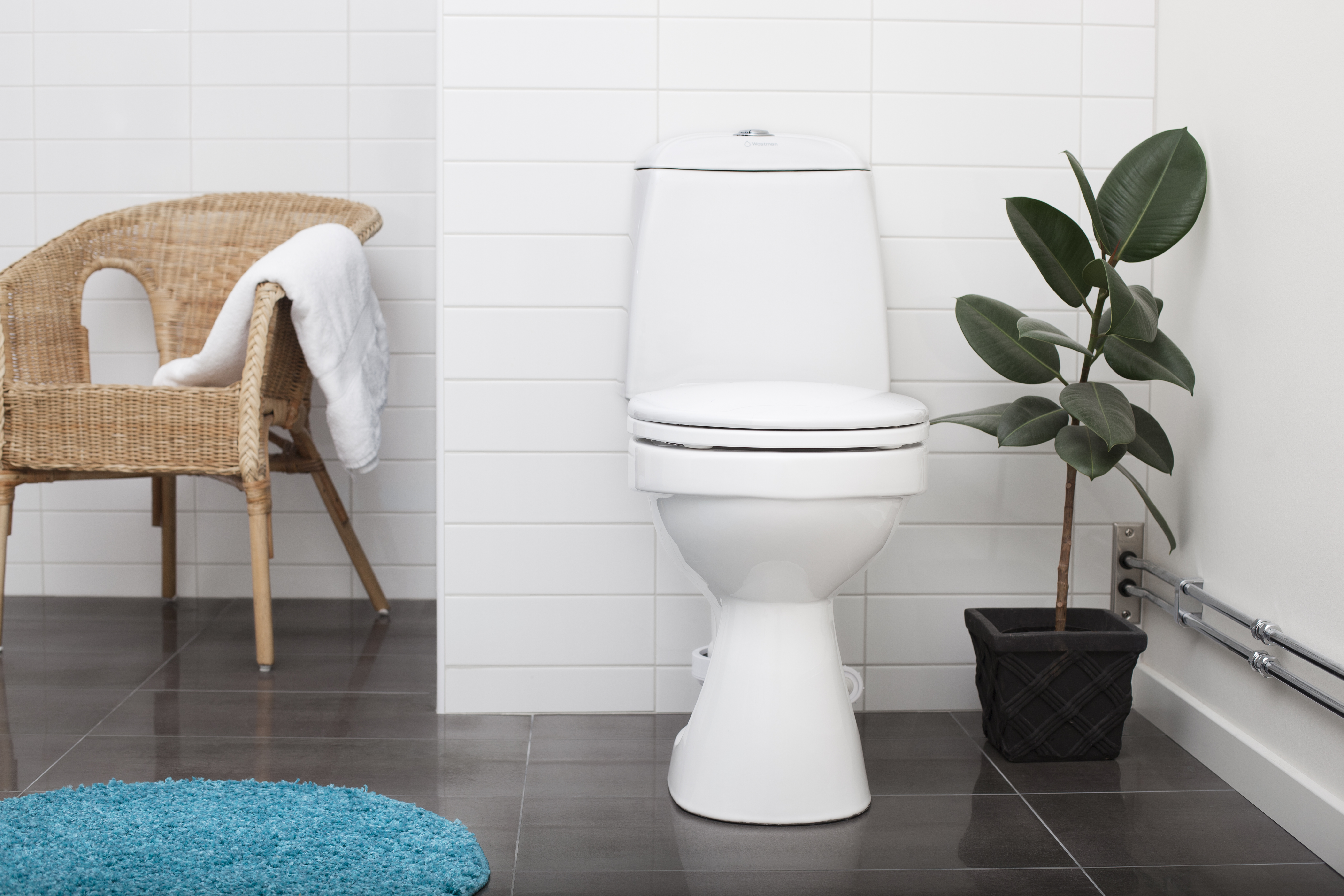

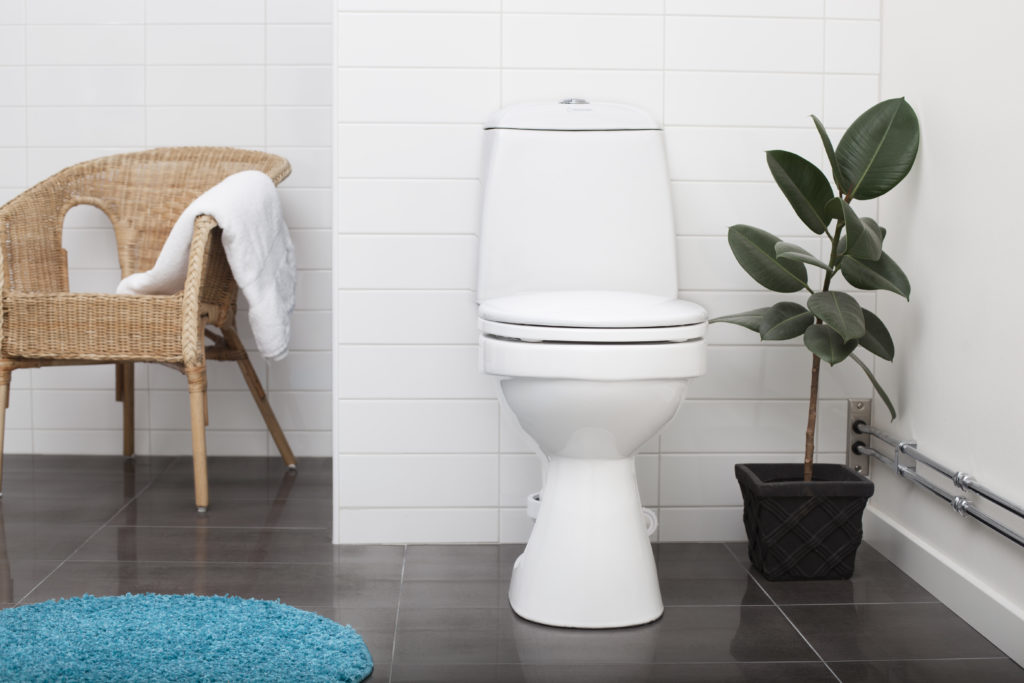
Could you kindly supply me with the following info?
1.Price per toilet
2.Where do I buy them(if i order online, how long does shipment take?)
3.Does it come with the special pan connector/pan collar in order to install it?
4.Does it use trusted and well known fill valve and flushing system or is it imported? (Had a few problems in the past where toilets were imported by developers and when there’s a problem, its unrepairable due to unavailability of parts).
Thanks in advance
Hi
1 The price of the toilet is 6990 ZAR
2 On line or pick up in Cape Town, normally 1-3 days delivery time.
3 It comes with a connector – its only for floor mounting (Swedish Standard) it´s not for wall mounting (needs much more water for flushing)
4. The toilet been on the Swedish market for almost 30 years and we have spare parts in stock.
Warmest regards
Birger Lundgren
Thanks for the valuable information. I just wanna share one of my personal matters. Few days ago I was started to face a new problem with my flush tank. The tank is taking a huge time to refill with water after a flush.
Hi Adam
Is it EcoFlush you have?
Have you checked the inlet filter? Sometimes rust or dirt is in the water and clogged the filter.
Regards
Birger
Do you have economy toilet for Africa